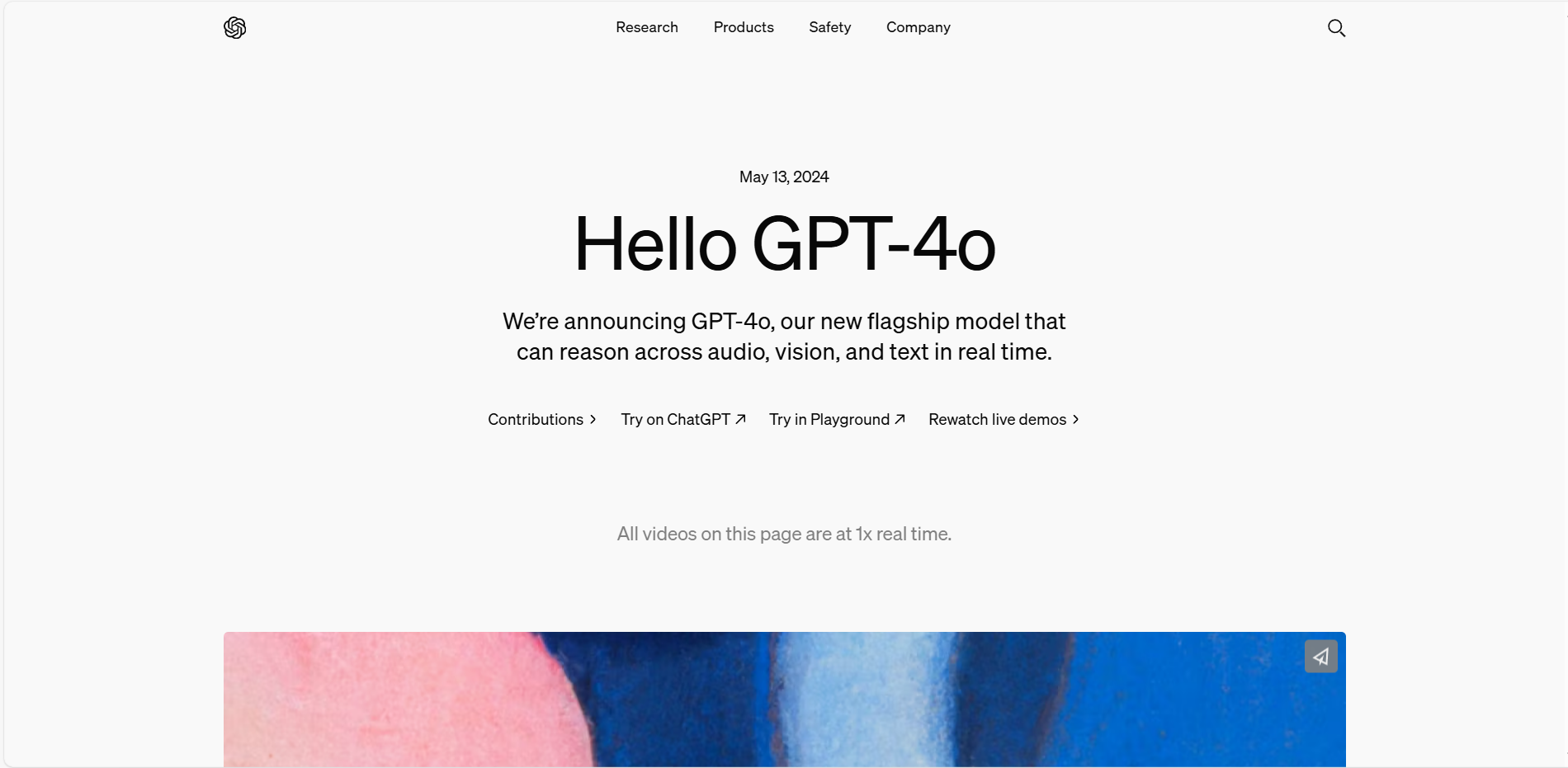Hello GPT-4o | OpenAI
OpenAI has announced the release of GPT-4o, a new flagship model that integrates reasoning capabilities across audio, vision, and text in real time. This model aims to enhance human-computer interaction by accepting inputs in various formats and generating outputs in text, audio, and image formats. GPT-4o is designed to be faster and more cost-effective than its predecessors, while also improving performance in non-English languages and understanding vision and audio inputs.
Customers
OpenAI's GPT-4o targets a diverse range of customers, including:
- Developers: Benefit from the API's enhanced capabilities for creating multilingual, audio, and visual applications.
- Businesses: Utilize GPT-4o for customer service, real-time translation, and other practical applications.
- Researchers: Explore new frontiers in AI with the model's advanced reasoning and multimodal capabilities.
- Educators: Leverage the model for interactive learning tools and educational content creation.
Problems and Solutions
Problems
GPT-4o addresses several key issues in AI and human-computer interaction:
- Latency in Voice Interaction: Previous models had significant delays in processing audio inputs.
- Multimodal Integration: Existing models struggled to integrate and process multiple input types simultaneously.
- Cost and Efficiency: High operational costs and slower processing times limited the accessibility of advanced AI models.
Solutions
GPT-4o solves these problems by integrating a single neural network trained across text, vision, and audio inputs. This approach reduces latency, enhances multimodal processing, and lowers costs, making advanced AI capabilities more accessible and practical for various applications.
Use Case
GPT-4o can be used in numerous scenarios, such as customer service chatbots that understand and respond to queries in real-time, educational tools that provide interactive and multimodal learning experiences, and business applications that require real-time translation and audio-visual processing.
Frequently Asked Questions
-
What is GPT-4o?
GPT-4o is OpenAI's new flagship model that integrates reasoning capabilities across audio, vision, and text in real-time, designed to enhance human-computer interaction.
-
How does GPT-4o improve over previous models?
GPT-4o is faster, more cost-effective, and better at understanding non-English languages and multimodal inputs compared to previous models like GPT-4 and GPT-3.5.
-
Who can benefit from GPT-4o?
Developers, businesses, researchers, and educators can all benefit from GPT-4o's advanced capabilities in creating interactive, multilingual, and multimodal applications.
-
What are the key features of GPT-4o?
Key features include real-time processing of text, audio, and visual inputs, faster response times, lower costs, and improved performance in non-English languages.
-
How can developers access GPT-4o?
Developers can access GPT-4o through the API, which offers text and vision capabilities, with audio and video capabilities to be rolled out to trusted partners in the coming weeks.
